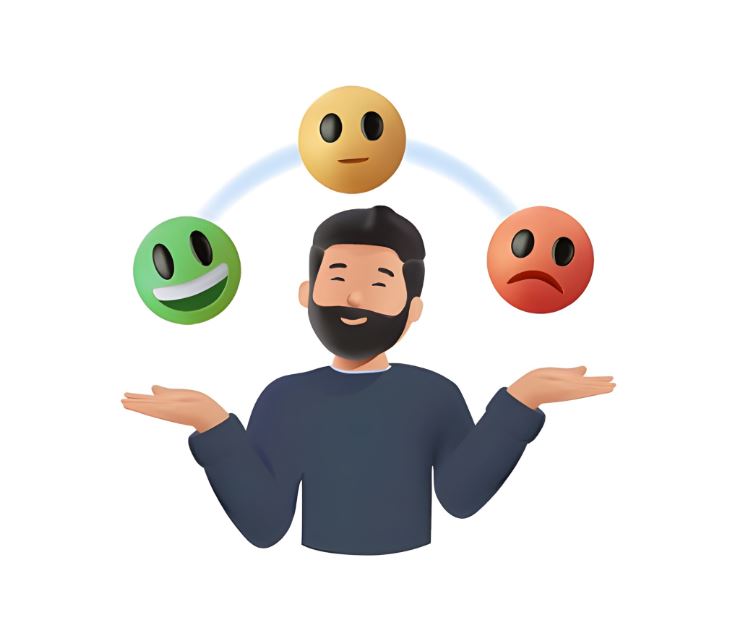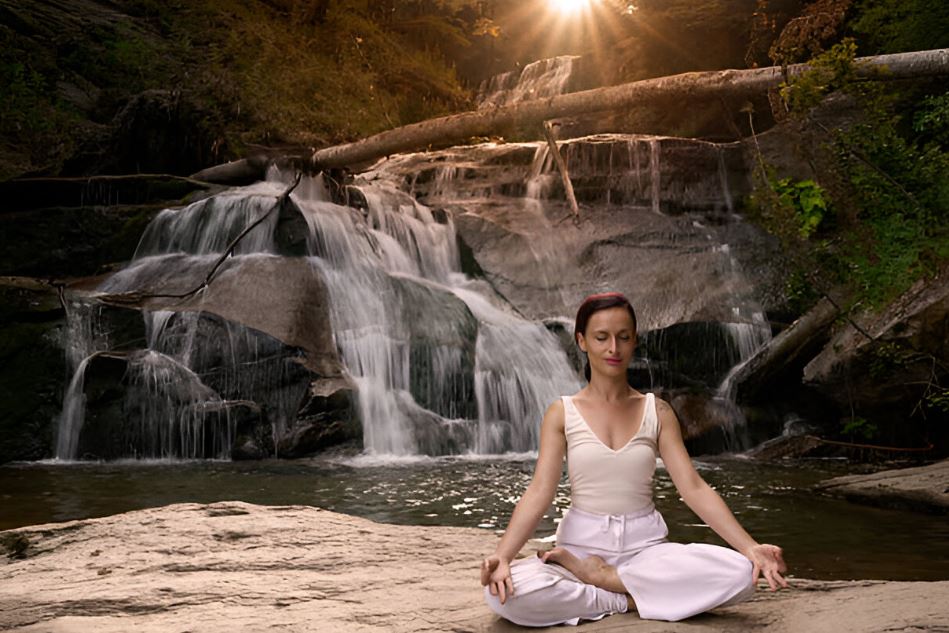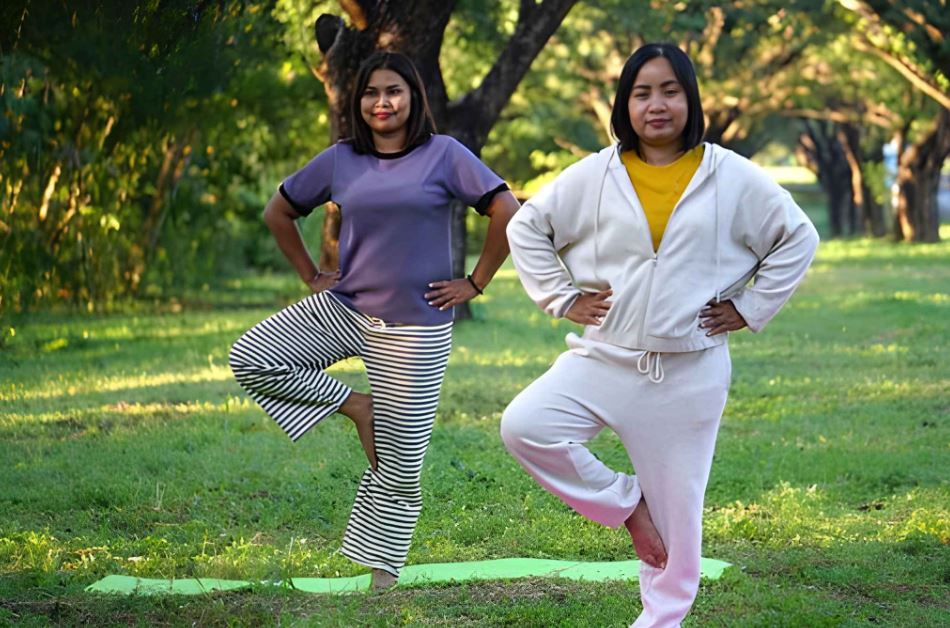In today’s fast-paced world, stress has become part of everyday life. From work deadlines and family responsibilities to financial worries and digital overload — it’s easy to feel mentally and physically drained. While you cannot always control external situations, you can control how your body and mind respond to them. One of the most effective natural ways to manage stress is through yoga. Even simple yoga techniques can quickly calm your nervous system, improve focus, and restore emotional balance.
This guide will show you easy yoga practices that anyone can do — no matter your age or experience level — to relieve stress fast and find inner peace.
Understanding How Yoga Helps with Stress
Before diving into specific techniques, it’s important to understand why yoga works so well against stress. Yoga combines movement, breath, and mindfulness — a trio that targets both the mind and body.
When you experience stress, your body activates the “fight or flight” response, increasing heart rate, blood pressure, and cortisol levels. Over time, this can lead to fatigue, anxiety, and health problems. Yoga does the opposite — it activates the “relaxation response” by calming the nervous system and lowering stress hormones.
Here are a few ways yoga helps reduce stress:
- Deep breathing slows down the heart rate and reduces anxiety.
- Gentle stretching releases muscle tension caused by stress.
- Mindful movement improves focus and prevents overthinking.
- Meditation and relaxation enhance emotional resilience.
You don’t need hours of practice. Just a few minutes of focused breathing or gentle poses can make a noticeable difference in how you feel.
1. Deep Breathing (Pranayama) for Instant Calm
Breath is one of the most powerful tools in yoga for stress relief. When you’re stressed, your breath becomes shallow and rapid, sending a signal to your brain that you’re in danger. Conscious deep breathing reverses this signal, bringing calmness to your entire system.
Technique 1: Diaphragmatic Breathing (Abdominal Breathing)
- Sit or lie down comfortably.
- Place one hand on your belly and one on your chest.
- Inhale slowly through your nose, letting your belly rise.
- Exhale slowly, letting your belly fall.
Do this for 5 minutes. This simple practice increases oxygen flow, lowers your heart rate, and relaxes tight muscles.
Technique 2: Alternate Nostril Breathing (Nadi Shodhana)
This pranayama technique balances both sides of the brain and brings emotional harmony.
- Sit upright with your spine straight.
- Use your right thumb to close your right nostril. Inhale through the left nostril.
- Close the left nostril with your ring finger and exhale through the right.
- Inhale through the right nostril, then exhale through the left.
Repeat for 5–7 rounds. This technique instantly clears the mind and reduces nervous tension.
2. Gentle Yoga Poses to Release Tension
You don’t have to be flexible to enjoy the stress-relieving benefits of yoga poses. Gentle, restorative movements are enough to relax the body and quiet the mind. Try these simple postures that work like natural relaxants.
Child’s Pose (Balasana)
This resting posture calms the nervous system and releases lower back tension.
- Kneel on the floor with big toes touching and knees slightly apart.
- Sit back on your heels and lower your torso forward, extending your arms in front of you.
- Rest your forehead on the mat and breathe deeply.
Stay here for 5–10 deep breaths. Feel your body surrender to gravity.
Cat-Cow Pose (Marjaryasana-Bitilasana)
A gentle spinal flow that releases back stiffness and promotes mindful breathing.
- Start on your hands and knees.
- Inhale as you arch your back (Cow Pose).
- Exhale as you round your spine (Cat Pose).
Repeat this movement for 10 slow rounds. It helps loosen tight muscles and improves circulation, instantly refreshing the mind.
Legs-Up-the-Wall Pose (Viparita Karani)
This restorative inversion improves blood flow and relieves tired legs.
- Sit beside a wall and swing your legs up while lying on your back.
- Rest your arms beside you with palms facing up.
- Close your eyes and take slow, deep breaths.
Stay in this position for 5–10 minutes. This posture reduces fatigue, improves circulation, and helps the mind settle.
Standing Forward Bend (Uttanasana)
Forward bends calm the brain and reduce stress quickly.
- Stand tall with your feet hip-width apart.
- Exhale and bend forward from your hips.
- Let your head hang heavy and relax your shoulders.
Hold for 5–7 breaths. This pose releases tension in the back and neck and promotes a feeling of surrender.
3. Mindful Meditation for Stress-Free Living
Meditation is a vital part of yoga that helps quiet the constant chatter of the mind. You don’t have to sit for an hour to feel the benefits — even a few minutes of mindfulness can help you stay centered and calm.
Simple Meditation Practice
- Sit comfortably with your spine straight.
- Close your eyes and focus on your breath.
- Notice each inhale and exhale without trying to control them.
- If your mind wanders, gently bring it back to the breath.
Practice this for 5–10 minutes daily. Over time, this habit trains your mind to stay calm even during stressful situations.
Guided Visualization
If you find it hard to meditate, try guided visualization. Picture a peaceful place like a beach, mountain, or forest. Imagine every detail — the sounds, smells, and feelings. Visualization helps your mind shift away from stress and into relaxation.
4. Short Sequences to Relieve Stress Fast
Sometimes you don’t have 30 minutes for yoga — you just need something quick. Here are short sequences you can do anywhere to instantly reduce stress.
5-Minute Office Yoga
- Seated Neck Stretch – 3 deep breaths per side
- Shoulder Rolls – 10 forward, 10 backward
- Seated Twist – 5 breaths each side
- Forward Fold Over Desk – hold for 5 breaths
Perfect for a mid-day break to reduce stiffness and mental fatigue.
10-Minute Evening Relaxation Flow
- Cat-Cow Pose – 5 rounds
- Child’s Pose – 5 breaths
- Seated Forward Bend – 5 breaths
- Legs-Up-the-Wall – 5 minutes
- Deep Breathing – 2 minutes
This short routine helps release the tension of the day and prepares your body for restful sleep.
5. Yoga Nidra — The Ultimate Relaxation Technique
Yoga Nidra, or “yogic sleep,” is a guided relaxation technique that brings you into a deep state between wakefulness and sleep. It’s one of the fastest ways to relieve stress and restore energy.
How to Practice Yoga Nidra:
- Lie down in Savasana (corpse pose).
- Close your eyes and take a few deep breaths.
- Follow a guided audio or mentally scan your body from head to toe, relaxing each part.
- Stay aware but relaxed — don’t fall asleep completely.
Just 15–20 minutes of Yoga Nidra equals several hours of deep rest. It helps release chronic tension and clears emotional blockages.
6. Tips for Making Yoga a Daily Stress-Relief Habit
Consistency is key to getting lasting results from yoga. Even short daily sessions can make a huge difference if practiced regularly. Here are some tips:
- Start small: 5–10 minutes a day is enough to begin.
- Create a calm space: Dedicate a quiet corner for your practice.
- Practice at the same time daily: Morning or before bed works best.
- Use gentle music or incense: This helps your mind associate the space with peace.
- Stay mindful: Focus on your breath and sensations rather than perfection.
Remember — yoga is not about flexibility or strength; it’s about awareness and connection.
7. Combining Yoga with Daily Life for Stress Relief
The true power of yoga lies not just in what you do on the mat, but how it influences your daily behavior. Try to bring the same calm awareness into your regular activities.
- During work: Take a few deep breaths before responding to stressful emails.
- During commute: Practice mindful breathing instead of scrolling on your phone.
- At home: Try gentle stretches while watching TV or cooking.
- Before sleep: Spend 2 minutes in meditation to let go of the day.
These small moments add up, helping you stay grounded and stress-free even in challenging situations.
8. Scientific Evidence Supporting Yoga for Stress Relief
Modern research supports what yogis have known for centuries — yoga is highly effective for managing stress. Studies show that regular yoga practice:
- Lowers cortisol levels (the stress hormone).
- Improves sleep quality.
- Reduces symptoms of anxiety and depression.
- Enhances overall emotional well-being.
A study published in the Journal of Clinical Psychology found that even a single session of yoga significantly decreases tension and fatigue while improving mental clarity. Another study from Harvard Medical School revealed that yoga and deep breathing stimulate the parasympathetic nervous system, promoting relaxation and healing.
9. Final Relaxation — Savasana (Corpse Pose)
Every yoga session should end with Savasana, the final relaxation pose. It allows your body to absorb all the benefits of your practice.
How to Do It:
- Lie flat on your back with legs apart and arms by your sides.
- Close your eyes and let your body feel heavy on the ground.
- Focus on your breath and allow your thoughts to fade.
Stay for at least 5 minutes. Savasana may look simple, but it’s one of the most powerful poses for stress relief.
Conclusion
Stress may be unavoidable, but suffering from it is not. Through simple yoga techniques — like deep breathing, gentle stretches, mindfulness, and relaxation — you can quickly calm your mind and restore balance to your body. You don’t need fancy equipment or long sessions; just a few minutes of conscious movement and breathing can transform your entire mood.
When practiced regularly, yoga becomes more than just a stress-relief tool — it becomes a way of living with awareness, patience, and peace. So the next time you feel overwhelmed, pause, take a deep breath, and let yoga bring you back to calmness.
Remember: peace is not something you find; it’s something you create within — one breath at a time.



